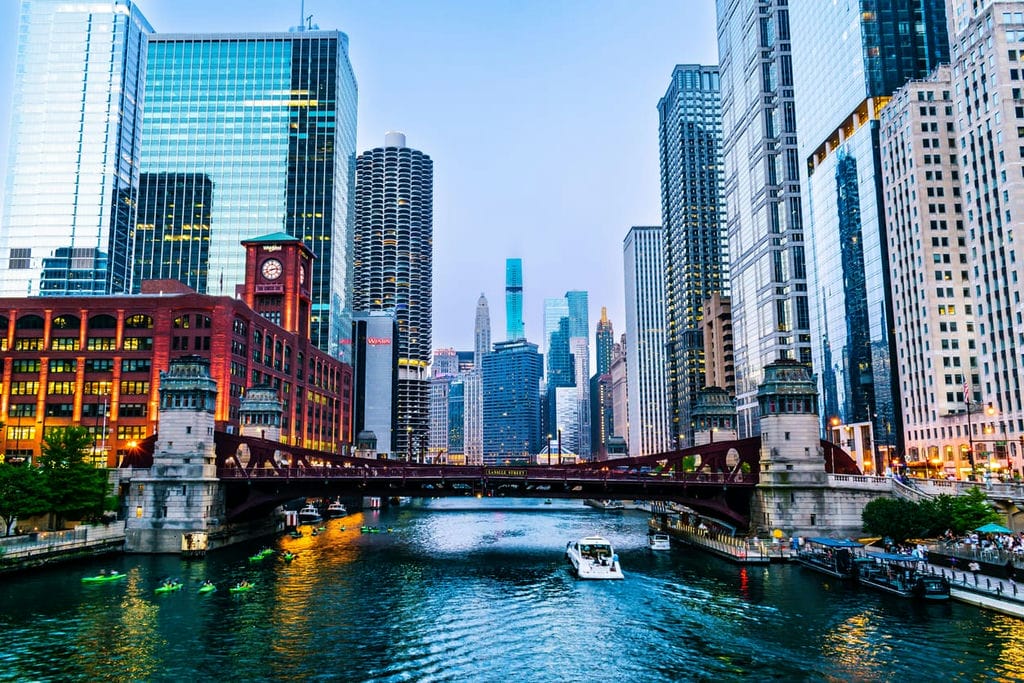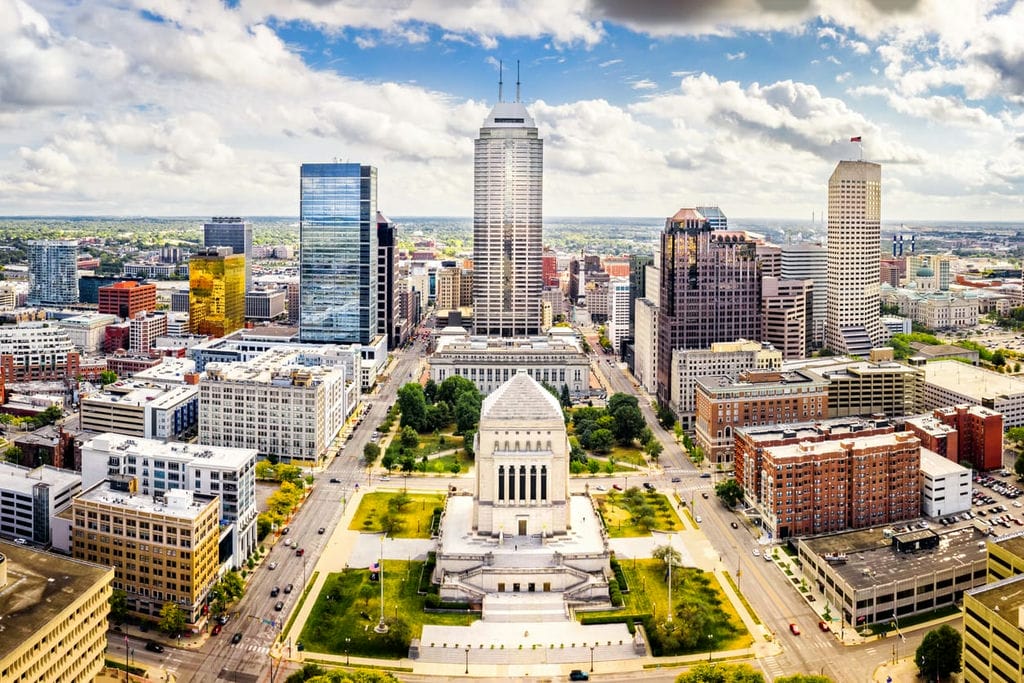Shipping from the State of Illinois to Indiana
Chicago, located on Lake Michigan, and connected to the eastern ports via the Erie Canal became a booming metropolis, and even the fire of 1871 could not stunt its growth. In the second half of the 19th century, the great need for workers in the mills, rail yards, and slaughterhouses made Chicago a popular destination for immigrants and freed blacks. During Prohibition Chicago became synonymous with bootleg liquor and gangsters like Al Capone.
After the American Revolution against the British, Illinois became a territory of the United States and achieved statehood in 1818.
Illinois has been noted as a microcosm of the entire United States. With Chicago in northeastern Illinois, small industrial cities and immense agricultural productivity in the north and center of the state, and natural resources such as coal, timber, and petroleum in the south, Illinois has a diverse economic base and is a major transportation hub. Chicagoland, Chicago’s metropolitan area, encompasses over 65% of the state’s population.

Illinois shares its eastern border with Indiana, Lake Michigan to the north, to the Wabash River in the south above Post Vincennes. Most of the western border with Missouri and Iowa is the Mississippi River; Kaskaskia is an exclave of Illinois, lying west of the Mississippi and reachable only from Missouri. The state has a northern border with Wisconsin. The northeastern border of Illinois lies in Lake Michigan, within which Illinois shares a water boundary with the state of Michigan, as well as Wisconsin and Indiana. The state capital is Springfield.
Illinois took the nickname Prairie State; Land of Lincoln. The state tree is the White Oak and the state flower is the violet. And the state motto is State Sovereignty, National Union.
Shipping to the State of Illinois to Indiana
Indiana sits, as its motto claims, at “the crossroads of America.” It borders Lake Michigan and the state of Michigan to the north, Ohio to the east, Kentucky to the south, and Illinois to the west, making it an integral part of the American Midwest.
Except for Hawaii, Indiana is the smallest state west of the Appalachian Mountains. After the American Revolution, the lands of Indiana were open to U.S. settlers. The influx of white immigrants brought the increased war with the Native American tribes.

The conflicts continued until the 1811 Battle of Tippecanoe, which was won by General, and future president, William Henry Harrison. With a name that is generally thought to mean “land of the Indians,” Indiana was admitted on Dec. 11, 1816, as the 19th state of the union. Its capital has been in Indianapolis since 1825.
Tulip is the state tree and the beautiful Peony is named the state bird. Indiana takes a nickname-Hoosier State.
